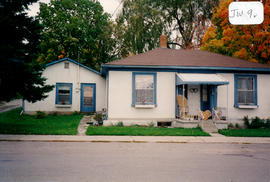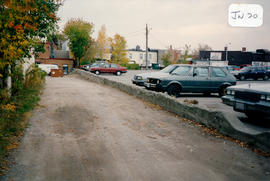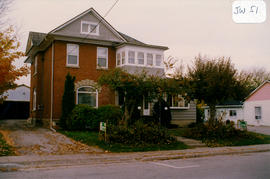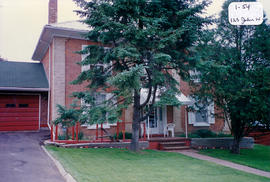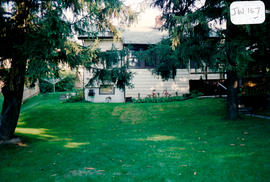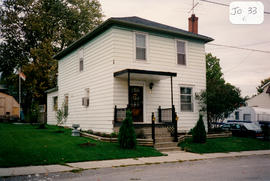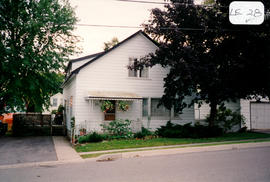- CA BWGPL GJ-HB-2017-04-05-07
- Item
- 1995
Part of George Jackson fonds
The building seen in this photo (from 1995) was once located on the north side at 9 John St. West. It was a long, one-storey, frame house with a verandah on the south side and a small porch on the east side (facing Barrie Street). Dick Crake and his sister lived here for a number of years after he moved from a large house on the northwest corner of Holland and Church Streets. They both died here around the time of World War II. John Metcalfe later moved here from a farm on Highway 88 (at the west end of town). He lived in the house as a bachelor until his death. The house was eventually demolished and the Bradford Post Office was built by Art and Leonard Saint at this location. (1, 2)
George Jackson

